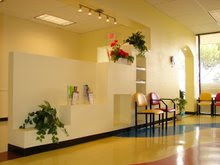Solutions:



Problem:
Adding to the model base create a composition of spaces that can be perceived as one object, where there is a clear “inside” and a clear “outside”. Create one main entrance into this object. Your “object trouvé” should mark a special place in your composition or be treated as a sculpture. Indicate the following spaces and transitions in your model(s), making sure that they are the strongest examples you created:
1: Large space with two distinct sub-spaces (zones: 1A and 1B)
2: At least one small space
3: A transitional space that is part of two others.
AT: Abrupt transition
LT: Lead transition
GT: Gradual transition












3 comments:
make sure the zones are sub-spaces in the same larger space.
I noticed that as well, I thought I would pause the sketch-up segment and work a little in model. I would like to see explore some other space movements as well as better define the 'sub-spaces'. I will have some physical model images tomorrow in the am.
Ken,
I approached the problem with a similar museum motiff. You know how you get a glimpse of an object from one gallery but never quite know what you will fully encounter until you get there. Half the fun is getting there; probably due to the experience of the transitions.
Post a Comment